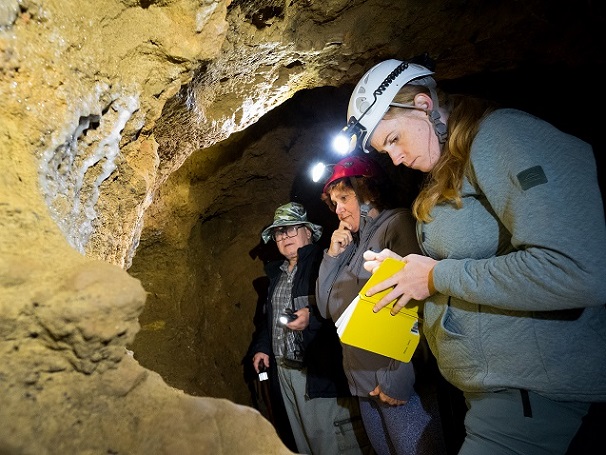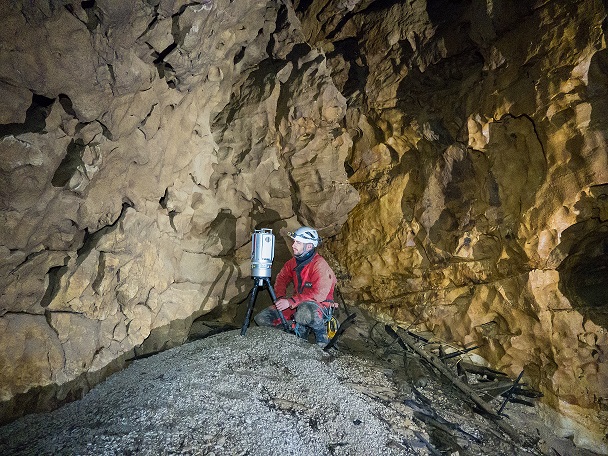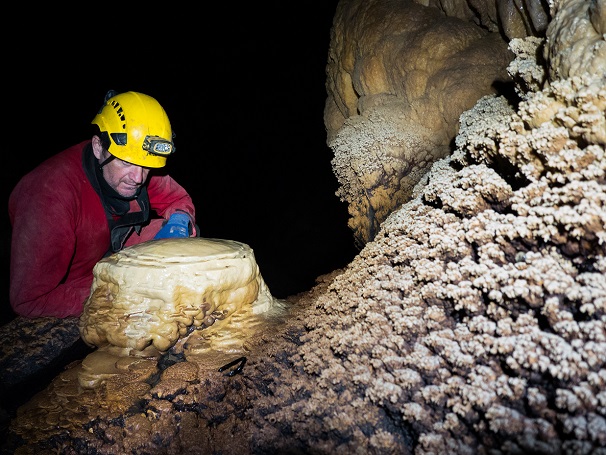Studying the evolution of karst areas under various geological, hydrological and climate settings
The objective is to determine the evolution of selected karst areas by understanding the formation of karst phenomena and caves in relation to the bedrock and the hydrological, climate and tectonic processes in the Quaternary and early part of the Tertiary. We will gain new knowledge regarding the evolution of active and relict epigenic and hypogenic caves, which have not received much attention in Slovenian karst so far. We will attempt to discover the mechanism that was largely responsible for the creation of hydrothermal caves and large calcite crystals. The results will contribute to a general understanding of the dynamics and evolution of karst areas, and contribute to the development of a new conceptual model and view of the sequence of events in time. The results of the research of individual sedimentary sequences, which include speleothems as records of the palaeoclimate, alluvia and potential palaeontological remains, will have an extraordinary chronological potential for improving our understanding of Miocene, Pliocene and Pleistocene climate and tectonic events, and of the age of processes within the region and worldwide. The new findings regarding palaeokarst features will improve our understanding of the dynamics of carbonate platforms, especially in the Mesozoic and Tertiary. Another objective is to upgrade the methodology of researching sediments for the purpose of gaining new interdisciplinary data on their composition, origin, transport, age, sedimentation or deposition environment and diagenesis, and to determine the climate and tectonic changes over time by applying the results of the studies of selected karst areas. By using new methodologies, the field research will help to determine and better understand the active tectonic structures in karst, and will contribute new knowledge and data on the structural-geological composition of karst areas (the underground and surface).

Research and sampling of sediments in the cave Dimnice, photo Blaž Kogovšek.

3D scan of the entrance pit of the cave Matijeva jama, photo Blaž Kogovšek.

Flowstone formation in the cave Planinska jama, photo Blaž Kogovšek.
Rezultati:
ŠEBELA, Stanka, TASIČ, Izidor, PAHOR, Jurij, MALI, Marko, NOVAK, Uroš, ALJANČIČ, Magdalena. Development of SLO KARST Near Fault Observatory site in SW Slovenia. Carbonates and evaporites. Jun. 2023, vol. 38, issue 2, article no. 43, 13 str., zvd., barvne fotogr., graf. prikazi. ISSN 0891-2556. https://link.springer.com/article/10.1007/s13146-023-00864-y, DOI: 10.1007/s13146-023-00864-y. [COBISS.SI-ID 147451395]
ŠEBELA, Stanka, NOVAK, Uroš. Geological structure of karst stratigraphical windows at Škocjan Caves, Slovenia. SN Applied Sciences. April 2023, vol. 5, issue 4, article no. 104, str. [1-11], ilustr., zvd., graf. prikazi. ISSN 2523-3971. https://link.springer.com/article/10.1007/s42452-023-05330-x, DOI: 10.1007/s42452-023-05330-x. [COBISS.SI-ID 146031875]
RAVBAR, Nataša, BARBORIČ, Blaž, KOVAČIČ, Gregor. Multi-decadal changes in vegetation and land use inferredfrom different data sources: two case studies at the regionalscale in the Slovenian karst. Land degradation & development. [Print ed.]. 13. avg. 2024, str. 1-15, ilustr., zvd. ISSN 1085-3278. https://onlinelibrary.wiley.com/doi/epdf/10.1002/ldr.5250, DOI: 10.1002/ldr.5250. [COBISS.SI-ID 206716419]